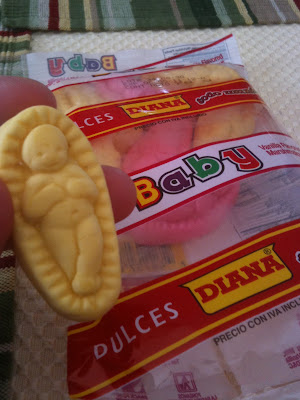A day in Anatolya
We took a day trip from Istanbul yesterday, first flying to Izmir, then traveling by car to Selçuk and Kusadasi. It was a long day as we had to wake up at 4:15AM and didn't get back to our hotel is Istanbul until after midnight, but it was worth it! And we were very happy for the chance to see the Asia side of Turkey -- known as Anatolia or Anatolya.
Our first tour stop was Meryemana or the House of the Virgin Mary. It is believed that she traveled to Ephesus with John (St. John) after the time of Jesus, and that she lived in the house shown in the above photo. As such, this place -- which is up on top of a mountain -- is considered a holy shrine. Some people leave messages for Mary on the wall below. I read some of the messages (I also took some photos but I don't want to post them here because they seemed so personal) but I can tell you that they asked for blessings on other people, for good health, and for good jobs. And they were written in many different languages.
Interestingly, in this same area of Turkey, there have been several examples of strong females throughout history. This is where the Amazon warrior women lived (not a myth according to both Mike and our tour guide) and also the home of Kybele and Artemis. In fact, the Temple of Artemis is just down the mountain from Mary's house. It was one of the seven wonders of the ancient world, but now only one column remains.
Although visiting Ephesus was the main purpose for our visit to the region, since it was a holiday Ephesus didn't open until 1:30pm. So after visiting Meryemana, we went back down the mountain and then headed towards Kusadasi where we had lunch at a government cooperative where girls learn to weave carpets in the traditional Turkish way. The carpets are then sold. We learned that the prices are much less here and they include shipping to your home anywhere in the world.
Above is a photo of the cooperative. That's a quince tree. When we expressed our curiosity about the taste of fresh quince (we had previously only had quince jam), our host picked one off the tree and had it prepared for us. It tastes a lot like an apple but the texture is grainy. We found we liked it better with salt on it!
Above: Our hosts demonstrate how silk is extracted from the silkworm cocoons.
Below: traditional Turkish carpets are made with naturally dyed fibers. The colors come from vegetables -- those are dried veggies in the jars.
Below: one of the carpet makers at work. The top part of the rug is the pattern she is following.
After lunch and a carpet viewing (with apple tea, of course!), it was finally time to go to Ephesus. Check the next entry for that story!







